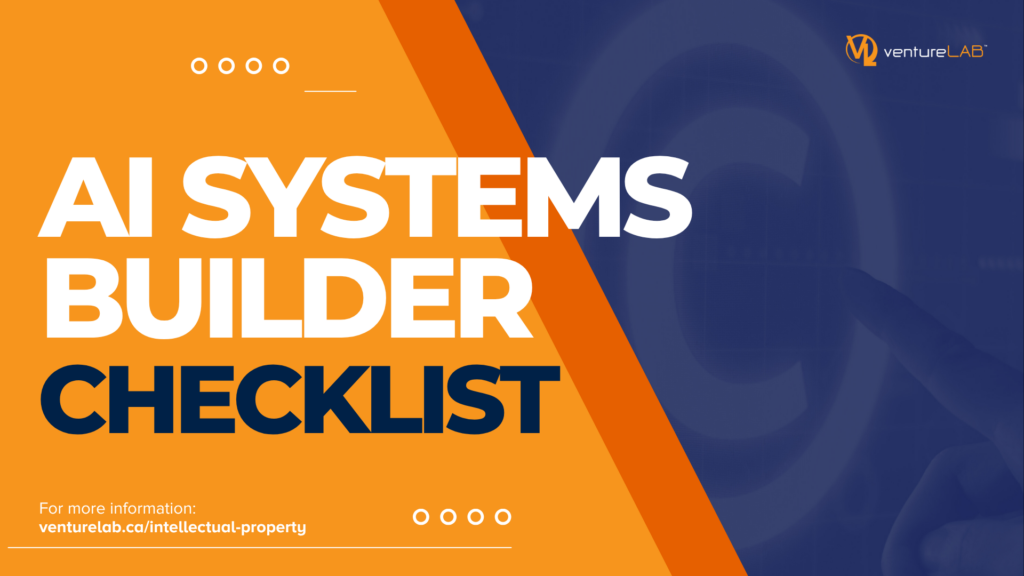Home » The Intellectual Property Checklist for AI Systems Developers
The Intellectual Property Checklist for AI Systems Developers

Essential Checklist for AI Development: IP and Compliance Considerations
As you embark on your AI development project, it’s crucial to address intellectual property (IP) and compliance issues systematically. This checklist serves as a guide to ensure you cover all vital areas throughout the process, divided into four key parts: data usage, data creation and storage, functionalities, and user interface/output.
Before You Start: Define Scope and IP Protections
Begin by clearly defining the scope of your AI project and identifying critical IP protections. Consider internal trade secrets and limit access to sensitive information to only those individuals who need it. Implement safeguards such as Non-Disclosure Agreements (NDAs), encryption, and access control measures to protect your algorithms, data, and development methods.
Data Usage for Training AI Systems
When utilizing data for training AI systems, confirm that you possess appropriate permissions. This involves verifying ownership and understanding license terms. It’s also essential to assess whether the usage of copyrighted materials aligns with fair use exceptions. Compliance with privacy regulations—including GDPR, CCPA, CPPA, and AIDA—is mandatory to ensure that the data collected adheres to legal standards. Moreover, maintaining a robust level of cybersecurity is pivotal to protect the data in your systems.
Model and Functionality Considerations
For the development phase, ensure that employee contracts explicitly state IP ownership related to software code and proprietary methods, assigning this ownership to the company. Utilize technical and review mechanisms to avoid including original third-party content in your final outputs. If you incorporate Open Source Software, meticulously track updates and license terms to ensure compliance with the respective licenses. If your AI solution might be patentable, refer to resources like the "Beginner's Guide to Patenting Software and AI" and consider consultation with a specialist for a patentability evaluation.
User Interface and AI Output
In terms of the user interface, consider legally protecting valuable brand elements and design features through trademarks and design patents. It’s vital to provide your AI software under clear licensing terms that outline user rights, data usage, and liability limitations. Additionally, incorporate disclaimers and liability limitations regarding AI-generated content to safeguard against potential legal issues.
Additional Resources
A vital resource available is the "Implementation Guide for Managers of AI Systems," intended to assist managers in adhering to the Canadian Voluntary Code of Conduct for the Responsible Development and Management of Advanced Generative AI Systems.
About the Author
This guide is authored by Allessia Chiappetta, a second-year JD candidate at Osgoode Hall Law School. Her expertise lies in intellectual property and technology law, strengthened by a Master’s degree in Socio-Legal Studies from York University with a specialization in AI regulation. Allessia is an advisor for inventors under Communitech’s ElevateIP initiative, focuses on innovation, and regularly contributes writings on IP developments for various platforms. Fluent in English, French, and Italian, she leverages her linguistic skills in her professional engagements.
This summary encapsulates all the critical points related to IP and compliance in AI development as outlined in the original document.
VentureLAB
https://www.venturelab.ca/
ventureLAB is a leading global founder community for hardware technology and enterprise software companies in Canada. Our organization is led by seasoned entrepreneurs and business leaders with decades of industry experience in building IP-rich start-ups, scale-ups, and global multinationals to help you scale your business. Located at the heart of Ontario’s innovation corridor in York Region, ventureLAB is part of one of the biggest and most diverse tech communities in Canada. We enable technology startups to accelerate the commercialization of transformational products on a global scale.


